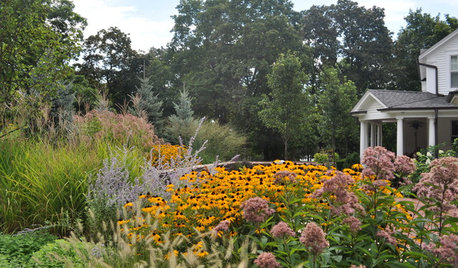Re-Doing Bermuda Lawn
mikerizzle9
10 years ago
Related Stories

LIFESo You're Moving In Together: 3 Things to Do First
Before you pick a new place with your honey, plan and prepare to make the experience sweet
Full Story
SAVING WATERHouzz Call: Are You Letting Go of Your Lawn?
Many facing a drought are swapping turf for less thirsty plantings. If you’re one of them, we’d like to hear about it
Full Story
GARDENING GUIDES5 Great Grasses for a New Lawn
Learn about maintenance, wear tolerance, ideal climate and more for these top turf choices to pick the right one for you
Full Story
GARDENING GUIDESHow to Plant a New Lawn From Sod
Take the quick-start route to turf with sod; these installation guidelines will help ensure a healthy and long-lasting lawn
Full Story
GRASSESHow to Rock a Lawn
Weekend Project: The key to healthy grass begins with the soil. If turf works for you, here’s how to fix it and keep it looking its best
Full Story
GREAT HOME PROJECTSHow to Replace Your Lawn With a Garden
New project for a new year: Lose the turfgrass for energy savings, wildlife friendliness and lower maintenance
Full Story
EARTH DAYThe Case for Losing the Traditional Lawn
Work less, help the environment and foster connections by just saying no to typical turf
Full Story
FRONT YARD IDEASBefore and After: Front Lawn to Prairie Garden
How they did it: Homeowners create a plan, stick to it and keep the neighbors (and wildlife) in mind
Full Story
GARDENING GUIDESHow to Prep Your Ground for a Healthy New Lawn
Seed or sod that falls on weedy, lumpy soil is a wasted effort. Follow these steps to ensure that your new lawn will thrive
Full Story
GARDENING GUIDESPacific Northwest Gardener: What to Do in September
Put in cool-weather veggies, fertilize your lawn and tidy the garden this month before chilly weather arrives
Full StoryMore Discussions







mikerizzle9Original Author
mikerizzle9Original Author
Related Professionals
Windham Landscape Architects & Landscape Designers · Birmingham Landscape Architects & Landscape Designers · Lyons Landscape Architects & Landscape Designers · Billerica Landscape Contractors · McKinney Landscape Contractors · Stamford Landscape Contractors · Deer Park Landscape Contractors · Deerfield Beach Landscape Contractors · Dudley Landscape Contractors · Essex Landscape Contractors · Pleasant Hill Landscape Contractors · River Ridge Landscape Contractors · West Chicago Landscape Contractors · Greenfield Landscape Contractors · Lake Forest Swimming Pool BuildersTXSkeeter
mikerizzle9Original Author
dchall_san_antonio